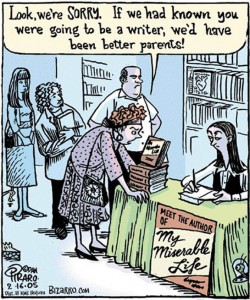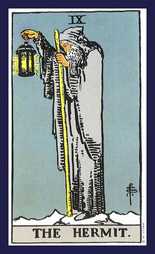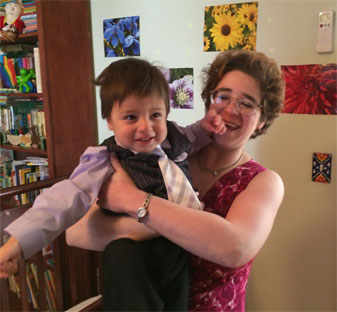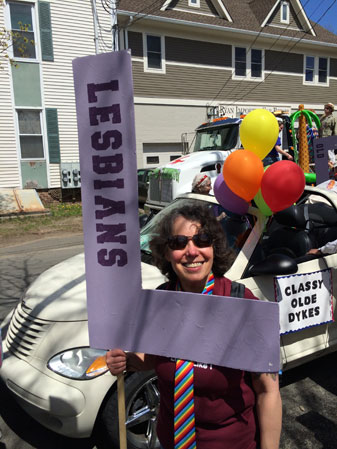“It was the best of times, it was the worst of times” sums up the state of social justice in America this week. Attorney Mary Bonauto of Gay & Lesbian Advocates & Defenders (GLAD) eloquently argued before the U.S. Supreme Court that denying marriage rights to same-sex couples violates the Constitution’s Equal Protection clause. Meanwhile, African-Americans and allies took to the streets of Baltimore to protest the never-ending death toll of black men killed by police brutality.
The Baltimore protest was sparked by the April 12 death of Freddie Gray, an unarmed 25-year-old who panicked and ran after police made eye contact with him, and who died from a spinal injury sustained during his arrest (and possibly from police withholding his medication). It continues a nationwide groundswell of outrage that started with the deaths of Michael Brown in Ferguson, MO and Eric Garner in NYC last year. See the story at Colorlines, a black-owned news site. For reasons I’ll get to in a minute, I don’t trust the mainstream media on this one.
As many supporters of the protests have pointed out, there’s been more outrage over property damage than lost lives. When white college students trash their town because…uh, something about football? or St. Patrick’s Day? whatever, dude…the media portrays it as a big carnival. But black citizens standing against injustice are labeled “thugs”.
At the Poetry Foundation website, Jericho Brown rips into this racist double standard in “How Not to Interview Black People About Police Brutality”. Brown’s numerous poetry honors include a National Endowment for the Arts Fellowship, a Whiting Writer’s Award, and a nomination for the Lambda Literary Award for Gay Men’s Poetry. Watch the 4-minute CNN clip of Wolf Blitzer’s interview with Baltimore activist Deray McKesson (linked in his essay) and then read Brown’s tremendous takedown.
If you want to see nonviolence that’s anything but passive, it’s McKesson not blowing his stack in reaction to Blitzer’s persistent race-baiting questions. A superhuman effort that should never have been required. Contrast that to the white interviewer’s self-serving invocation of Martin Luther King Jr. to tone-police the protests. It reminded me of the way that Jesus’s message of nonviolence is twisted by abusers to keep their victims passive, as described here by Christian feminist blogger Sarah Moon.
From Brown’s essay:
Let’s be honest about white people’s attraction to Dr. King in the 1960s and your attraction to him today. If King’s mode of protest was the only protest occuring during his time, white people would not be such huge champions of him. He helped to create for you in your early adult years and for me before I was born a possibility for living in this nation without it being burned down. I think you know as well as I do that plenty of King’s contemporaries had ideas other than non-violence.
Your love of King is not a real love of him. Instead it is a fear of violence (and dare I say, of retribution). You NEVER mention his name on your show until you see the threat of violence. But as soon as someone in an understandable rage sets something on fire, you have the nerve to say “Dr. King” like he’s the token he never meant to become. Aligning yourself with King in this way in 2015 makes you an apologist for police brutality against black people, an apologist for police to murder black people and get away with it, and an apologist for a system that continues to structurally support these injustices.
Your point of view, your smug tone in this interview with Deray McKesson and other interviews suggests that Dr. King’s example of getting harassed, beaten, and arrested SHOULD be anyone’s ONLY option. Don’t you think people put in dire circumstances should at least have more options than what was available to them 50 years ago?
Before we reach the age of 20 in classrooms around this country, we learn how violently the Americas were colonized, and we learn how violently our founding fathers revolted against the Crown. When are you going to bring up the fact that the violence of rebels that founded this nation is taught as justice? When will you be honest about the fact that we are free to owe violence a great debt when that violence is perpetrated by white people?…
…Please stop saying Martin Luther King, Jr.’s name if you’re not going to be honest about his existence on this planet. You throw his name around like he was some sort of saint who never wanted to whip a white cop bloody. Certainly, you have to know that this would have been impossible. Restraint is the exception for any human being who lives at risk.
The non-violent arm of the civil rights movement that white people love so much consisted of highly trained men and women capable of taking a beating. While I am glad those men and women did the work they did on this planet, I am always hurt to know that’s the work they had to do. Wolf, I want you to have the sense to be hurt, too.
And now for some good news. GLAD’s website summarizes the high points of oral argument before the Court on Tuesday. At issue in Obergefell v. Hodges was whether the Fourteenth Amendment requires states to issue marriage licenses to same-sex couples. The full transcript is also a worthwhile read, and not too technical for non-lawyers. Justice Ginsburg astutely observed that the definition of marriage has already changed from legalized male dominance to equal partnership, so there’s no longer a reason to restrict the partners’ identities by gender. Even conservative Justice Roberts chimed in with the suggestion that this was “a straightforward question of sexual discrimination”. This framing would avoid the need to create a new protected class based on sexual orientation in Equal Protection law, a move that the Court’s conservative bloc wouldn’t buy.
My favorite zinger came from Justice Sotomayor during the respondent’s oral argument. John Bursch, an assistant attorney general from Michigan, made the case on behalf of state marriage bans. He argued that if our culture starts defining “marriage” based on adults’ feelings for each other, rather than their duty to their biological children, straight couples won’t feel that it’s important to get married and support their kids. To which the Justice replied, “Why would a feeling, which doesn’t make any logical sense, control our decision-making?”

Justice Sotomayor and Abby the Fairy wish you a happy Northampton Pride tomorrow!







